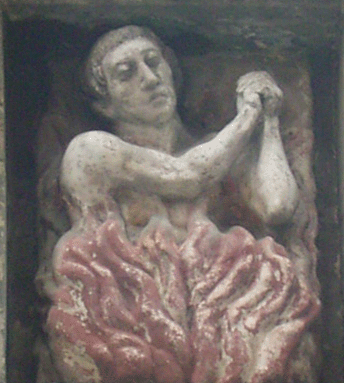
渡日外国人労働者に対する構造的暴力:保健医療への人類学的アプローチ(2009)
Structural Violence Toward Foreign "Newcomers" Workers in Contemporary Japan: An Anthropological Approach to Health care, Welfare and Low-intensity Conflict
池田光穂、ジェレマイヤ・モック

1990年の入管法改正により日本の移民政策スキームの変化により国内の労働市場への渡日外国人の参入が顕著になり、また各種産業界も彼らの労働力 に依存するようになってきた。これは彼らの医療・保健・福祉サービスへのニーズ(社会的要求)に応える必要性があることを端的に示す。しかしながら司法・ 行政・立法という国家レベルでの問題から、行政から地域の自治体レベル、さらにはコミュニティあるいは家族や個人単位にいたるまで、その受け入れ態勢にさ まざまな不備が指摘されている。
演者たちは、渡日外国人が直面している医療・保健・福祉サービス上の問題と対策を、個人レベルの傷病とケアの問題として考えるのではなく、社会文化 的な苦悩とそれに対する社会文化的なケアとして捉える。そして、それらを渡日外国人が遭遇する構造的暴力とそれへの緩和実践であると理解する。
ヨハン・ガルトゥング(1969)によると、構造的暴力は行為者を特定しにくい暴力行使のことであり、人為的暴力および直接的暴力との対概念として 定義される。我々が知りうる渡日外国人に対するさまざまな社会的不利益を理解するのに構造的暴力はうってつけの概念ではあるが、医療人類学ポール・ファー マー(2004)が正しく指摘するように、構造的抑圧という説明は「罪深い」ものではあるが同時に「誰にも責任がない」ような表面的意味をもつ。つまりこ の概念には、あらゆる社会的暴力の根の深さを示すと同時に、それを責任ある当事者としての自覚をもつことを抑圧するという困った機能をもつと言うのだ。
現場の医療従事者や医療通訳が、この種の構造的暴力に対して義憤を抱き、渡日外国人に対する人道的、法的、行政的、倫理的な個別対応をおこなうだけ でなく、第三の媒介者の介入により多くの国民に対してこの〈構造的暴力への隠蔽機構〉を知ってもらう、つまり白日のもとにこの事態を暴露するという必要性 もある。演者たちは、その具体的な戦術について提案し、その可能性と限界について考察する。
Structural Violence Toward Foreign "Newcomers" Workers in Contemporary Japan: An Anthropological Approach to Health care, Welfare and Low-intensity Conflict
Mitsuho IKEDA and Jeremiah MOCK
Center for the Study of Communication-Design, Osaka University
We confront with the new national scheme of immigration policy in which the number of foreign "Newcomers" workers has grown after the Immigration Law reform in 1990. This situation reminds us that it would be necessary to construct new form of fulfillment their needs on health care and welfare. However we have not yet complete them on various social levels from personal and family to community and national level.
This presentation do not only understand that the problem and its solving of the foreign workers' social and welfare issues as simplified care-takers and care-givers issue, but interpret as “structural violence” and reconciliation relationship. According to Johan Galtung (1969), the word corresponds with the systematic forms in which a given social structure or social institution may harm people indirectly by interrupting them from resourcing their basic needs; the structural violence consequently contrasts against personal violence or direct one. It may be useful to understand actual political economy of health care and welfare for foreign workers using the concepts on structural violence, but Paul Famer (2004) points correctly, the explanation indicating not human and/or agent subjects but non-human "structure" seems both "sinful" and ostensibly "nobody's fault." This language pragmatics has an ambivalent potential both to uncover how have rooted socially the structural violence and to hide who are the responsible of it.
We are able to observe some pioneer civil groups on supporting healthcare and welfare for foreigners in various social contexts, e.g. medical translator in health setting. We need encourage some civil sectors to discover "mechanisms of hiding structural violence" toward foreign workers in Japan. And we will propose some our liberating approach in our presentation.
新たな動き(2018年)
「菅官房長官、新たな在留資格盛り込んだ法案提出する考え」TBSニュース)
「外国人労働者の受け入れ拡大に向け、菅官房長官は、新たな在留資格の創設を盛り込んだ法案を、この秋の臨時国会に提出する考えを明らかに しました。/「一定の専門性、技能を持った即戦力となる外国人材を幅広く受け入れるように、臨時国会に法案を提出したい」(菅義偉官房長官)/菅長官は講 演で、人材不足解消のため、外国人の就労を目的とした新たな在留資格の創設を盛り込んだ法案を秋の臨時国会に提出する考えを明らかにしました。来年4月か らの制度のスタートを目指すということです。/「十数の業種が外国の人材がいないと支障を来すとされている」として、対象については、介護分野などをはじ め人手不足が深刻化している業種を中心に検討する方針です」(2018年9月26日14:16)
https://headlines.yahoo.co.jp/videonews/jnn?a=20180926-00000070-jnn-pol
____________________
本編はこちらです!
「渡日外国人労働者に対する構造的暴力:保健医療への人類学的アプローチ」
リンク
文献
その他の情報
関連リンク
(cc) Mitzub'ixi Quq Chi'j. Copyleft, 2009-2018